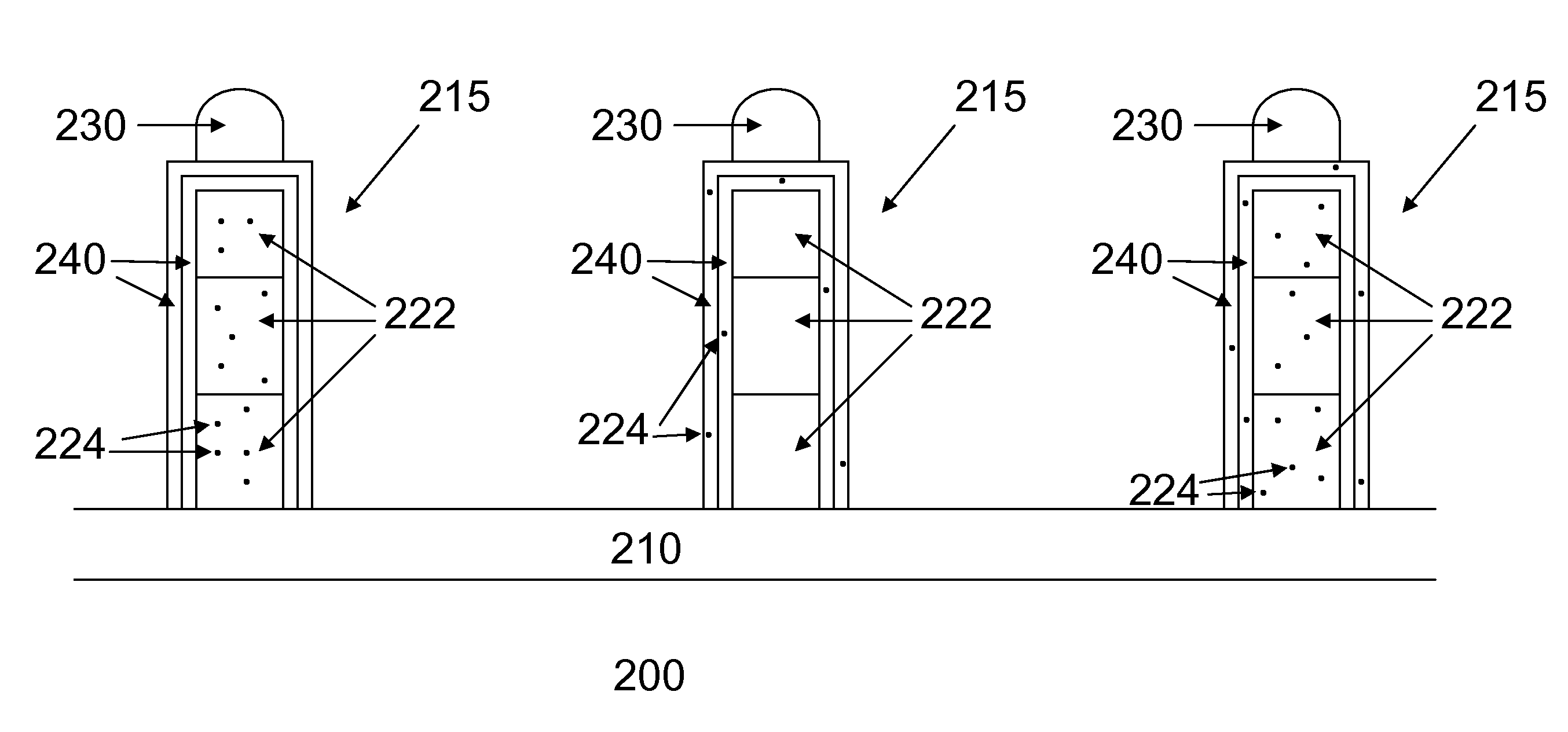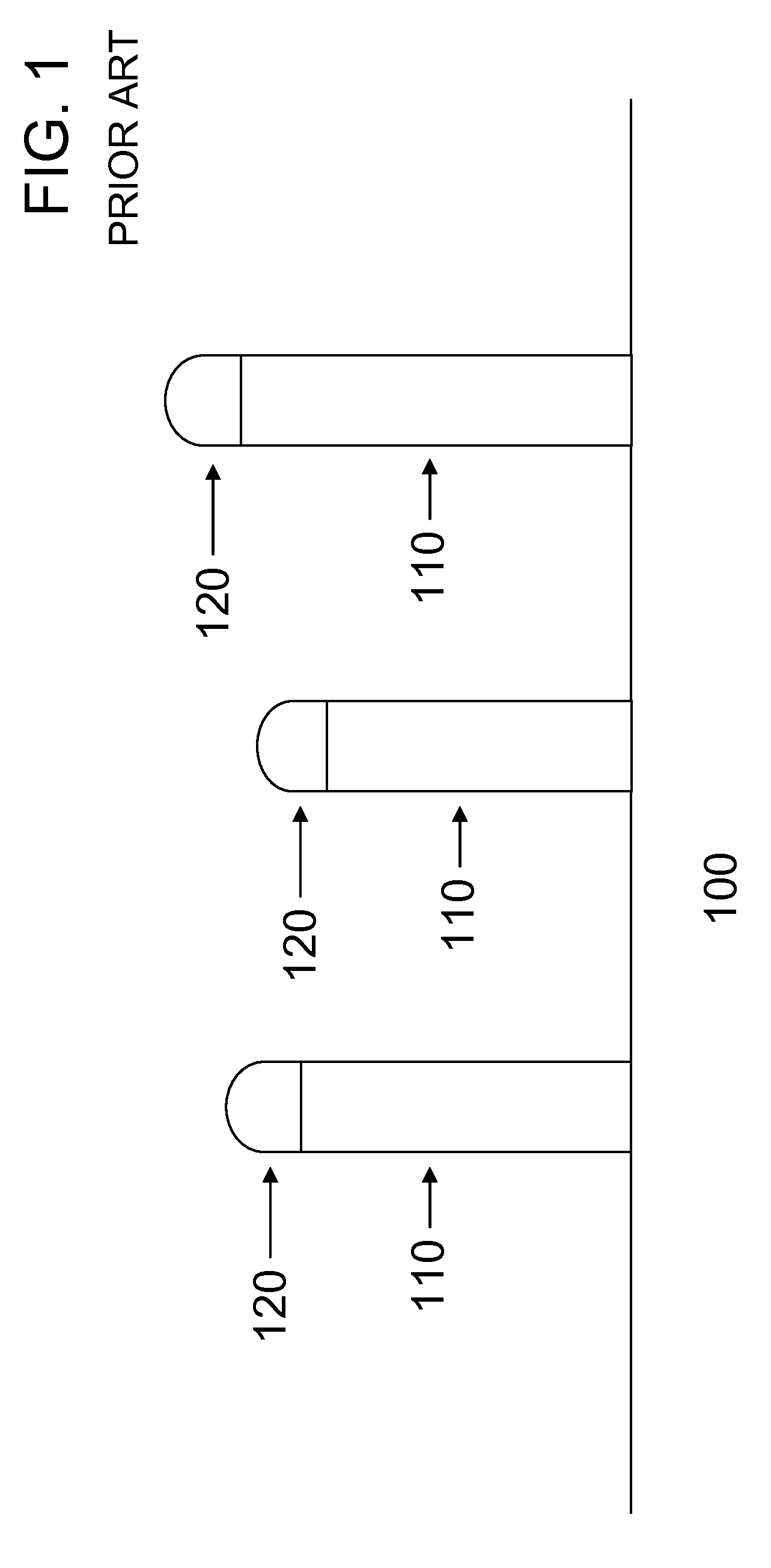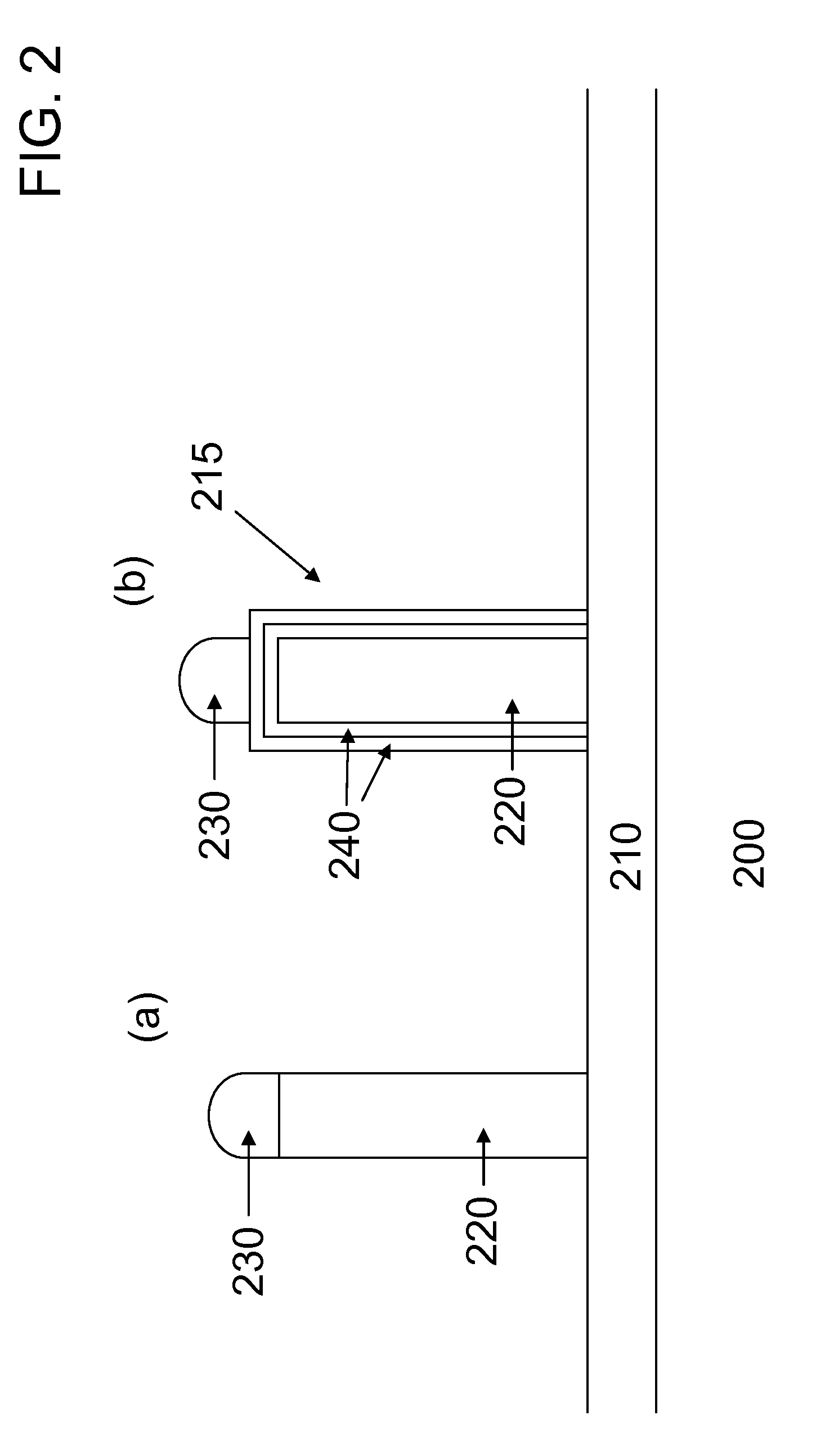Forming ii-vi core-shell semiconductor nanowires
a technology of semiconductor nanowires and core shells, which is applied in the field of forming low defect iivi coreshell semiconductor nanowires, can solve the problems of poor color, high cost, and sub-desirable efficiency, and achieve the effects of reducing melting point, low cost, and few unwanted native defects
- Summary
- Abstract
- Description
- Claims
- Application Information
AI Technical Summary
Benefits of technology
Problems solved by technology
Method used
Image
Examples
example 1
[0040]In this example a comparison is made between the photoluminescence responses of unshelled ZnSe nanowires and shelled ZnSe nanowires, where the shelling material is ZnSeS. Both types of nanowires are formed on Si substrates, where a low energy surface film 210 of silicon oxide is on the surface of the Si. To begin the process the Si substrates are degreased in a sonicator using consecutively acetone, methanol, and water. Next the Si substrates are placed in a conventional dry thermal oxide furnace where 1 micron of oxide is formed on the surface. To form metal alloy nanoparticles 230 of gold-tin the substrates are placed in a conventional thermal evaporator whose base pressure goes down to ˜10−6 torr. Prior to thermal evaporation the substrates are degreased in a sonicator using consecutively acetone, methanol, and water. To form the gold-tin nanoparticles, 1 nm of gold is thermally evaporated, followed by 3 nm of tin.
[0041]Growth of the nanowires occurs in a home-built atmosph...
example 2
[0043]In this example ZnSe / ZnSeS core-shell nanowires are grown where the core ZnSe nanowire is doped with Cl. The growth conditions are analogous to that described in Example 1 for the core-shell nanowires except for the following. The chlorine precursor is butyl chloride. Because small amounts of Cl is required to dope ZnSe highly n-type, the butyl chloride bubbler was cooled to a temperature of −25 C. For the ZnSe:Cl core nanowire growth, 2.8, 15.4 and 0.4 sccm of He—H2 flows through the Zn, Se, and Cl bubblers, respectively, for 65 minutes. Once more there are two ZnSeS shells (35% and 55%). For the 35% ZnSeS shell, 2.8, 10.0, and 9.2 sccm of He—H2 flows through the Zn, Se, and S bubblers, respectively, for 13 minutes. For the 55% ZnSeS shell, 2.8, 6.9, and 14.4 sccm of He—H2 flows through the Zn, Se, and S bubblers, respectively, for 20 minutes.
[0044]FIG. 7 shows representative scanning electron microscope (SEM) images of isolated ZnSe:Cl / ZnSeS core-shell nanowires at two diffe...
example 3
[0045]In the final example multiple quantum wells of ZnSeTe are grown in the core ZnSe nanowires, which once again are shelled with ZnSeS (35% followed by 55%). In order to increase the flow rate of carrier gas through the Zn bubbler, it is cooled to a temperature of −13° C. (enabling a factor of 10 increase in the flow rate). For this example the Au / Sn nanoparticles are formed by thermally evaporating 1.5 nm of Au followed by 4.5 nm of Sn. The Te precursor is diisopropyl telluride. Its bubbler is cooled to −18 ° C. For the ZnSe:ZnSeTe core nanowire growth, 7.7, 7.8 and 30 sccm of He—H2 flows through the Zn, Se, and Te bubblers, respectively. It is to be noted that the Te precursor flow is indicative of approximately an 8% Te concentration in ZnSeTe. The main He—H2 carrier gas flows at 1700 sccm, while the substrate is maintained at 330° C. Starting with the growth of ZnSe for 420 s, the ZnSeTe quantum wells are grown for 5 s, followed by 145 s of a ZnSe barrier section. This sequen...
PUM
| Property | Measurement | Unit |
|---|---|---|
| pressure | aaaaa | aaaaa |
| pressure | aaaaa | aaaaa |
| thickness | aaaaa | aaaaa |
Abstract
Description
Claims
Application Information
 Login to View More
Login to View More - R&D
- Intellectual Property
- Life Sciences
- Materials
- Tech Scout
- Unparalleled Data Quality
- Higher Quality Content
- 60% Fewer Hallucinations
Browse by: Latest US Patents, China's latest patents, Technical Efficacy Thesaurus, Application Domain, Technology Topic, Popular Technical Reports.
© 2025 PatSnap. All rights reserved.Legal|Privacy policy|Modern Slavery Act Transparency Statement|Sitemap|About US| Contact US: help@patsnap.com



